No products
My account Sign in My wishlists
WHAT IS PASHMINA ?
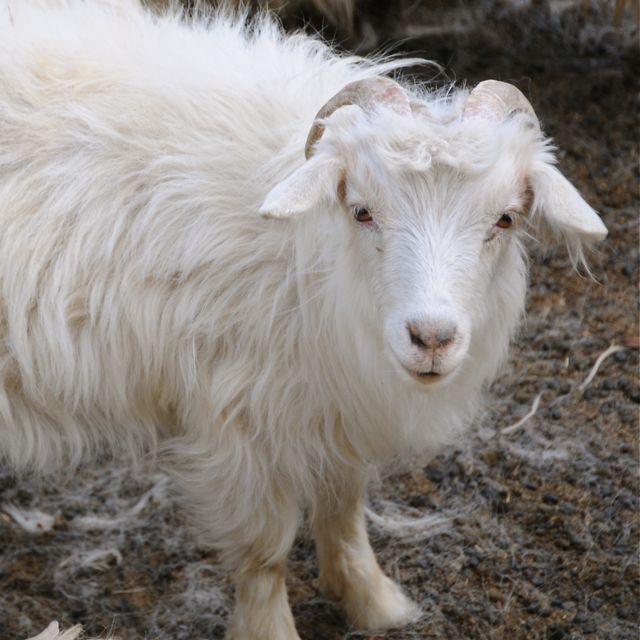
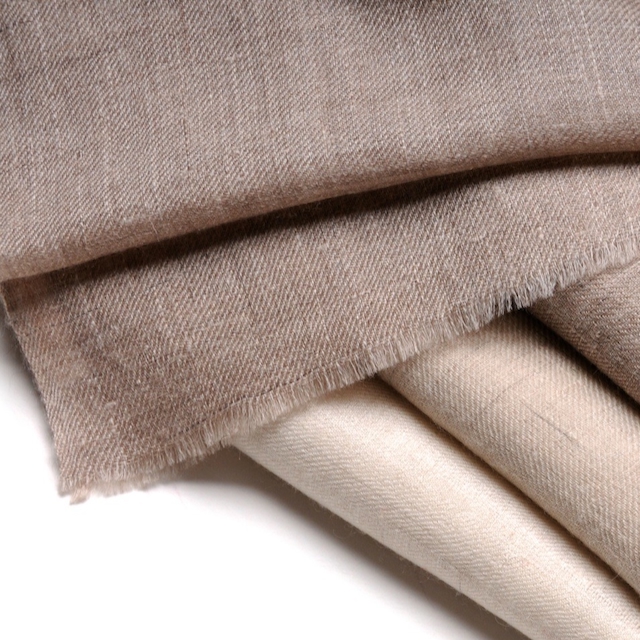
Harvested in high altitude, Pashmina is the most noble cashmere variety, the oldest and the most luxurious.
It is derived from the Changra goat's light winter undercoat. It is the finest and softest in the neck and stomach area. This down of "pashm" is a kind of hyper cashmere that the goat only produces in extreme conditions, that is to say beyond 4500 m altitude. It is therefore collected on the foothills of the Himalayas, especially in Ladakh.
One goat produces about 150g of pashmina per year. In the spring when it loses its winter fur, it is combed in order to gather the fine silkier hair which is longer and of high quality.
While a cashmere fiber has a diameter less than 19 microns, pashmina is thinner : less than 15 microns.
However, it is interesting to note that this definition, according the tradition, has no legal value. Indeed, the pashmina fiber, contrary to cashmere, is not labelled.
______________________________________________________________________________________________________________________________________________________________________________________________________________________________________________________
PASHMINA THROUGH CENTURIES
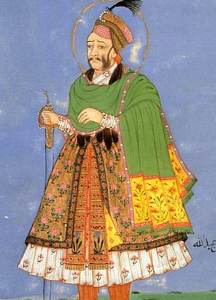
The word pashmina comes from the Persian word "pashmînah" which means woolen from the "pashm", the Changra goat's down.
The Kashmir Valley population was famous for weaving shawls. The wool came from the winter fleece of goats in Central Asia and the Himalayas, who lived more than 4500 meters above sea level.
Since antiquity cashmere wool is one of the biggest luxury goods transported by road to the Roman Empire. This industry soared in the 16th century during the reign of the Mughal Emperor Akbar which gave him the status of royal patronage, favoring a highly qualitative development.
Mostly worn by men, pashmina shawls where once a privilege and only worn by kings.
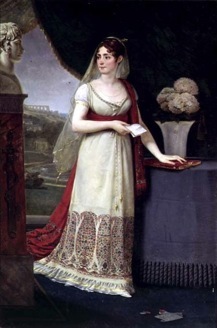
In the 18th century Kashmir exported shawls to Europe, first in England and then in France after the Napoleonic campaigns.
Being a great partner, Empress Josephine then started to campaign for the fashionable Kashmir shawl, which then saw an undeniably huge craze throughout the century. Being very expensive, it was a symbol of social distinction and a centerpiece of bridal outfits. It was heavy and richly embroidered.
Forgotten during the 20th century, Pashmina experienced a newfound surge in popularity in the 90s with the new launch of the fashionable garment by Hollywood stars...
Historically this "diamond" wool is synonymous with luxury.
______________________________________________________________________________________________________________________________________________________________________________________________________________________________________________________
PASHMINA SHAWL MANUFACTURING
Shot in 2015, this video of our craftsmen has travelling around the world to become the reference in the field: Princesse Moghole is proud to reveal the secrets of making a real Pashmina ♡
LADAKH : Harvesting pashmina
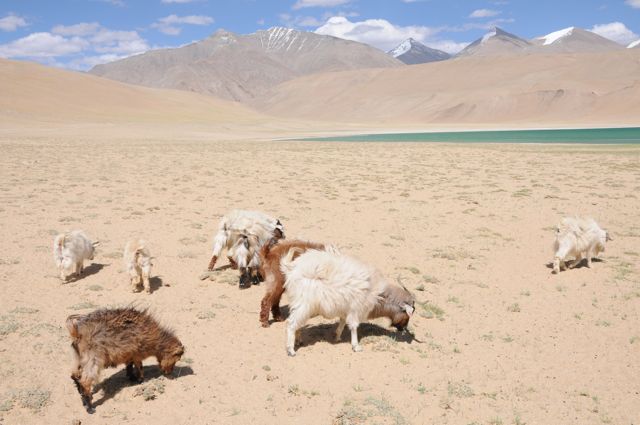
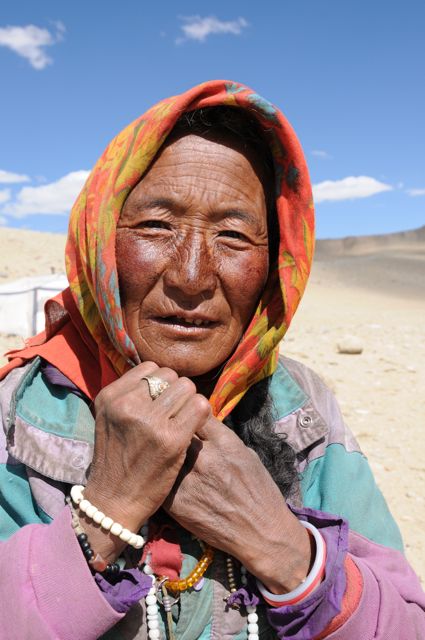
This pashmina fur is the main source of income for nomadic herders Chang Pa and perpetuates the traditional way of life at 4600m high, in the highlands of Ladakh, on the border of Tibet. To protect their financial success, the price for their furs was set by the Indian State at 3700 rupees for 2 kg.
The fibers are washed and sorted, then the "pashm" fleece is routed to Srinagar in Kashmir valley, the only region in the world to master the delicate art of weaving.
Traditional and still handmade, this production of "historical" cashmere, respectful of the environment, sustainable and ethically responsible, represents today only 0,5% of the world production, against 90% for the cashmere said "of Mongolia" which actually comes to 80% from China..
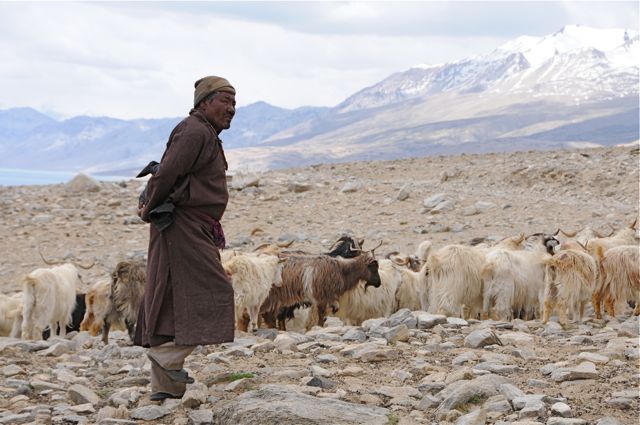
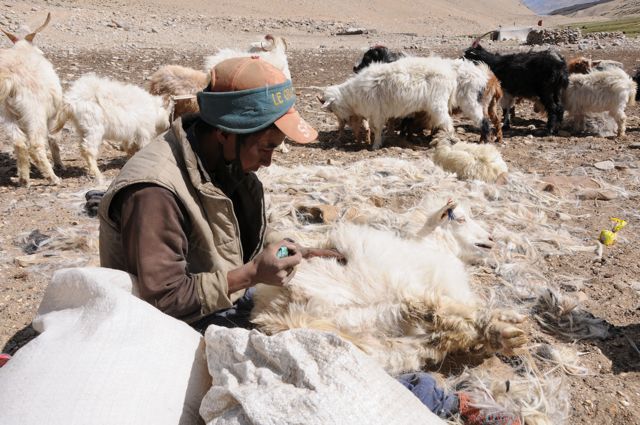
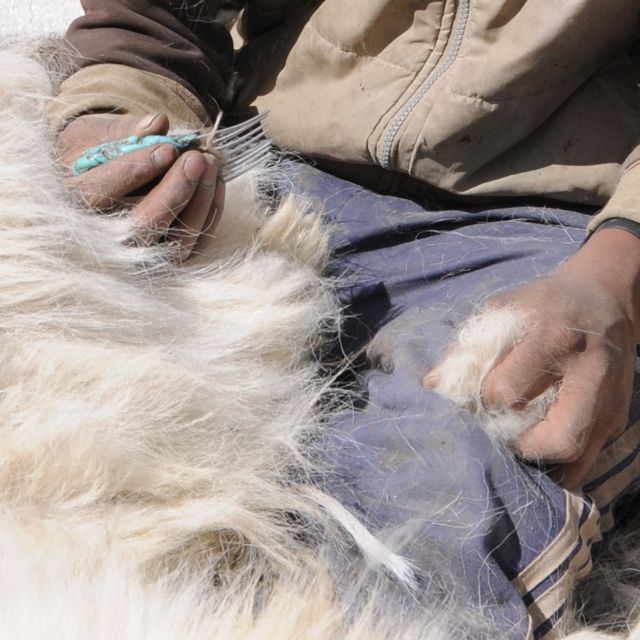
KASHMIR : Spinning and weaving
For centuries, the region of Kashmir has acquired unparalleled expertise in weaving pashmina. However, due to political instability, the disorganized productions and sometimes-questionable business practices, this region has been loosing its supremacy compared to the production by their neighbour Nepal. Although Nepal does not possess the same knowledge, it is a more stable and reliable economic partner for importing countries.
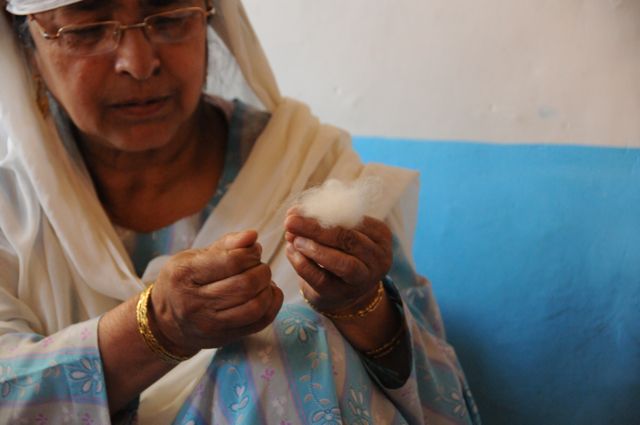
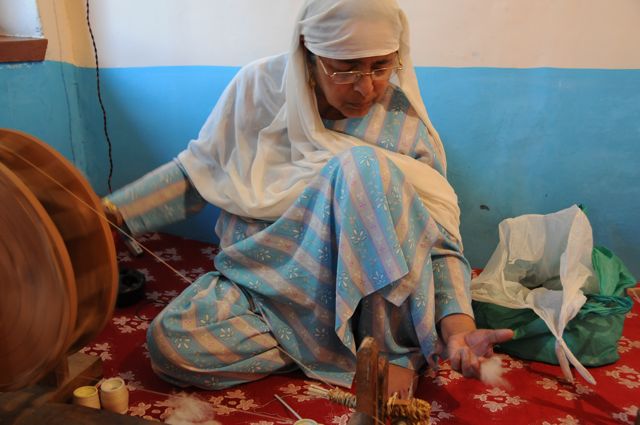
Pashmina spinning
Down is first spun by hand using a spinning wheel, it is very delicate work and traditionally done by women.
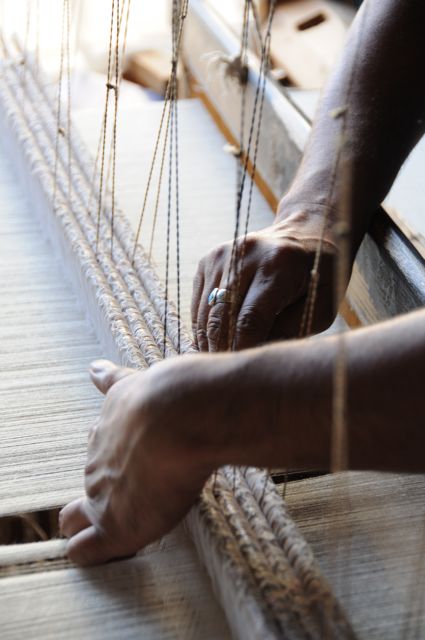
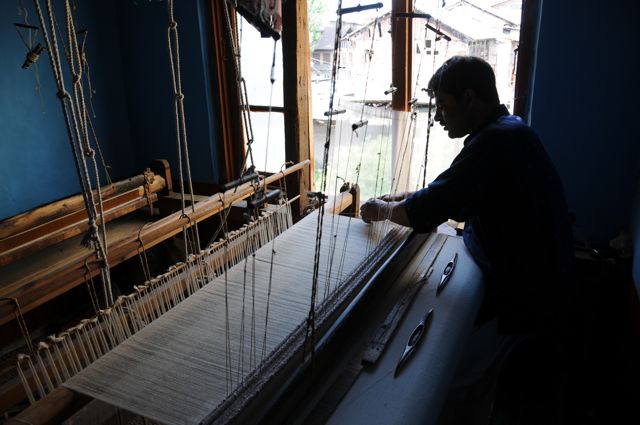
Pashmina weaving
The resulting yarn is then hand woven on traditional wooden looms using ancestral techniques. One of the most popular woven patterns, and for making the finest shawls, is bird's eye (Bulbul) or the diamond pattern. The wool used is naturally of a brown or cream colour, which allows for simple dyeing.
> Shop the plain pashminas collection !
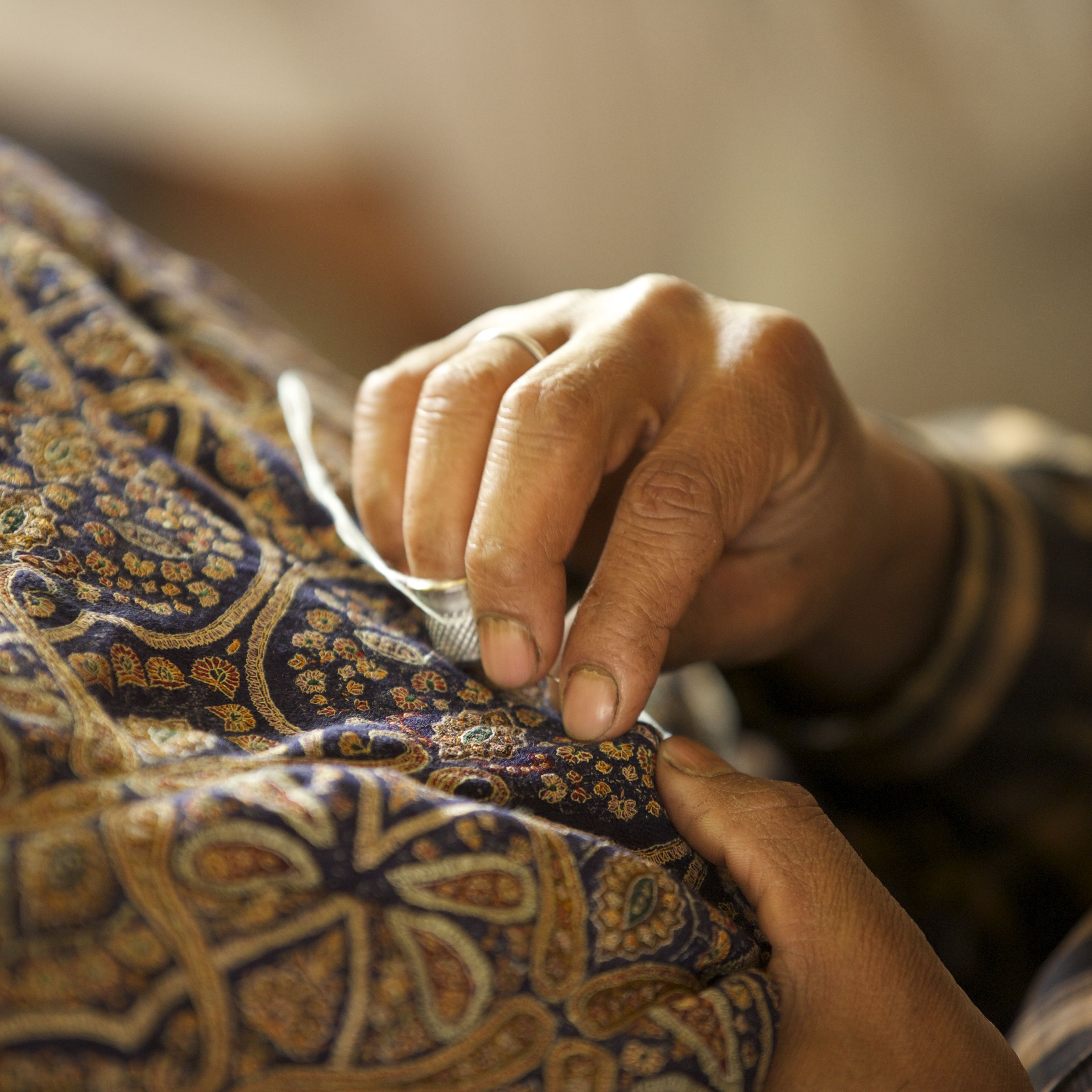
Pashmina embroidery
The shawl is then dyed and can be embroidered. This is long, meticulous and almost mystical work, done exclusively by men that work at a very fast pace. A shawl can also be woven in different colours, with patterned stripes, squares or arabesques directly inserted into the frame.
> Shop the embroidered pashminas collection !
______________________________________________________________________________________________________________________________________________________________________________________________________________________________________________________
ORIGINAL AND IMITATIONS
NO LABEL
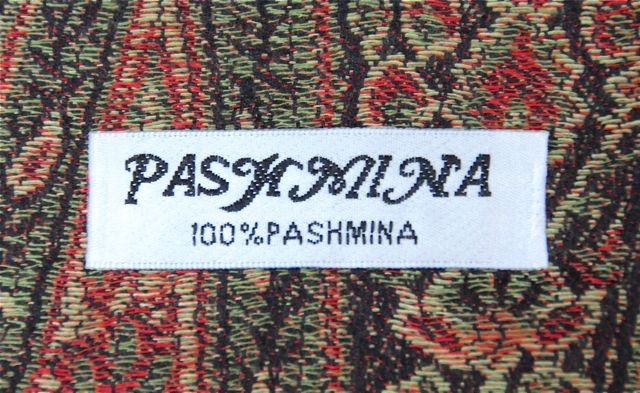
The main difficulty lies in the fact that, unlike Kashmir, pashmina fiber has never been protected by a brand. Bought by a Chinese company, the brand PASHMINA uses labels that do not indicate the composition of the material.
From a legal standpoint, the pashmina is not recognised material. The name 100% Pashmina on labels masks synthetic fibers such as viscose fabric or polyester.
MANY REPRODUCTIONS
The word Pashmina is so widely used - and legally - to designate a simple fabric with fringes, here are the different materials that you might encounter :
HOW TO RECOGNIZE A REAL PASHMINA
Recognize a synthetic fiber from natural fiber : the test of fire. Remove a string from the material and burn it. If it burns quickly in a large, bright flame, giving off a smell of burnt paper: it is viscose. Other synthetic fibers like polyester will even burst into hard little balls of fire. Silk, wool and Kashmir burn easily, without emitting flames, and release an odor of burnt horns.
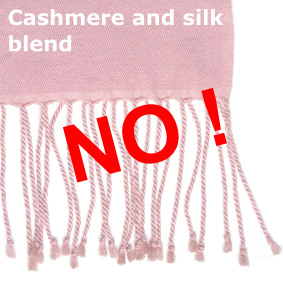
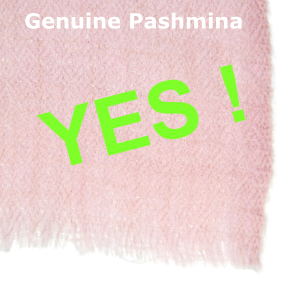
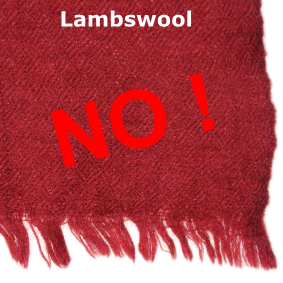
But the most difficult imitation to detect - to the point that even professionals may have doubts - is the machine-woven fabric with a cashmere yarn from Mongolia. Even if it is in cashmere, this industrial article is not a true pashmina and will not present its longevity.
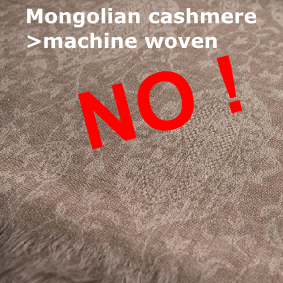
There are 2 ways to unmask it:
> if it presents in its weave patterns woven in arabesque (or jacquard), it is that it was woven on a mechanical loom = it is thus a fake

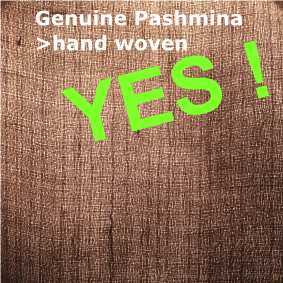
> if his weaving is much too uniform and does not present the small irregularities proper to the passage of the hand of the man. To make sure of this it is enough to examine the fabric in transparency in the light. In addition it will generally be lighter than a real pashmina.
So how do you know ?
An authentic hand-woven Pashmina in pure Himalayan cashmere will be soft, light, crease-resistant and immediately warm to wear.
He will present in his weaving slight irregularities guaranteeing its manufacture on a manual loom.
it will have been made in Kashmir exclusively, a region stretching from northern India to Pakistan. No real pashmina is woven in Nepal.
Finally it will have to be labeled 100% cashmere and will NEVER be cheap.
To avoid unpleasant surprises, it is necessary to be very vigilant!
> SHOP THE GENUINE HANDWOVEN CASHMERE PASHMINAS COLLECTION
Photo credit © Claire Denouel / Princesse Moghole




